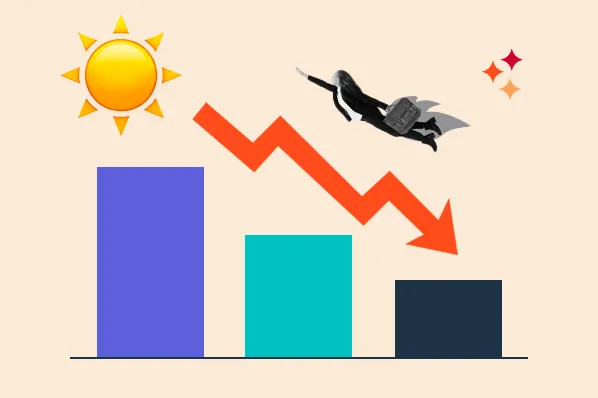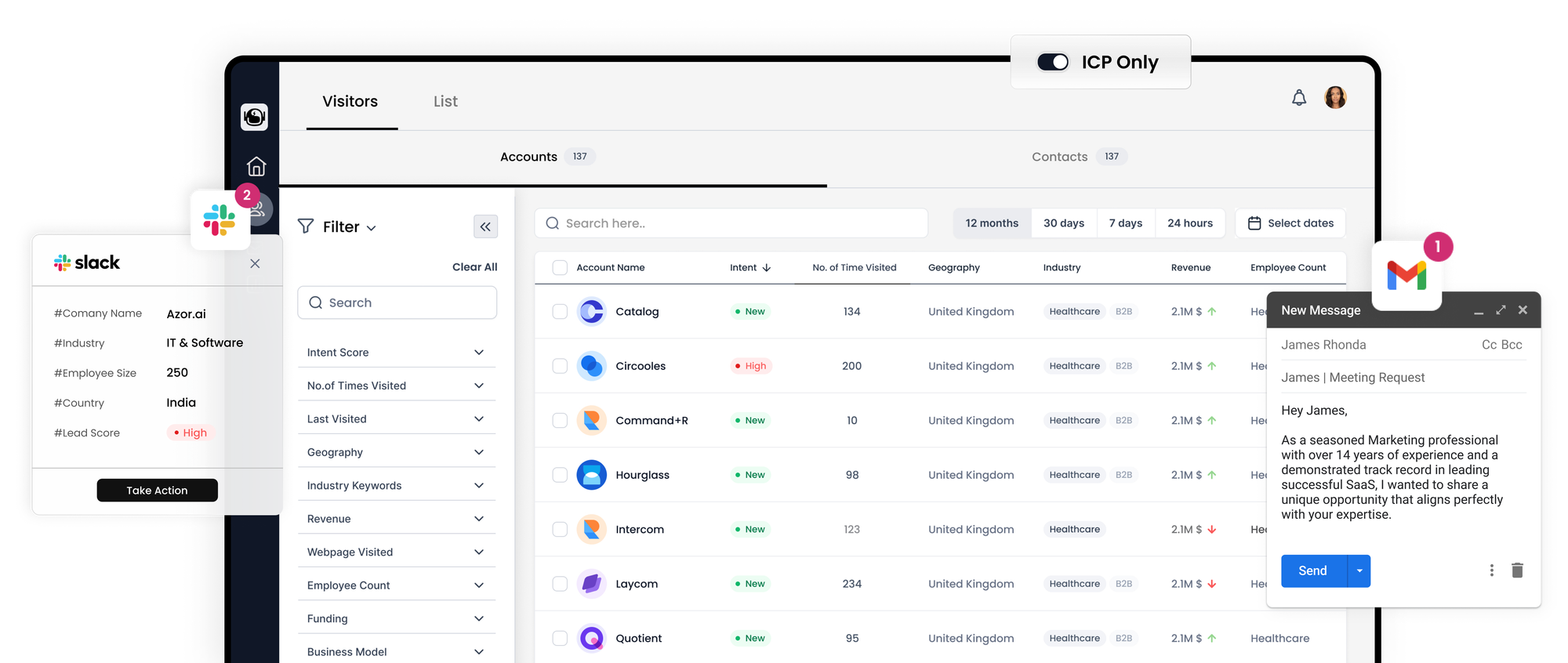Understanding Demand Generation and Its Impact on Marketing

If you're seeking clarity on the concept of demand generation and its potential influence on your marketing efforts, you've come to the right place. This article will demystify demand generation, address any misconceptions about it supplanting lead generation, and shed light on how these two facets should complement each other in your marketing strategy.

Defining Demand Generation
Demand generation is the process of cultivating interest and awareness for products and services using marketing techniques like blogging, SEO, and advertising. Its aim is to generate curiosity, build anticipation, and garner attention. An effective demand generation strategy yields high-quality leads, accelerates sales cycles, and amplifies brand visibility.
However, it extends beyond being a mere top-of-the-funnel marketing tactic. Demand generation encompasses multiple touchpoints and channels, spanning social media, content creation, webinars, email marketing, community building, and more, spanning the entire customer journey. It requires more than a financial investment in paid advertisements; it necessitates the development of a comprehensive marketing strategy that not only attracts qualified prospects but also lays the groundwork for enduring customer relationships.
Demand Generation vs. Lead Generation vs. Lead Nurturing
Demand generation primarily focuses on raising awareness through inbound methods, while lead generation involves capturing the leads generated by these activities. Demand generation aims to reach new audiences and markets, while lead generation captures leads with the highest potential for conversion. Lead nurturing, conversely, operates at the bottom of the funnel, nurturing qualified leads into paying customers.
Choosing Between Demand Generation and Lead Generation
The question of whether to opt for demand generation or lead generation is best answered with "both." A well-rounded marketing strategy necessitates the seamless integration of both approaches to consistently generate a stream of high-quality leads across the sales funnel.
Demand generation and lead generation work symbiotically. Demand generation draws attention, creates buzz, and drives traffic, while lead generation converts this attention into leads, opportunities, and ultimately, customers. The notion of pitting demand generation against lead generation is a flawed perspective.
Benefits and Challenges of Demand Generation
Demand generation offers numerous advantages, extending beyond its potential to boost your bottom line:
1. Improved Lead Quality
By tailoring content and campaigns, demand generation can increase both the quantity and quality of leads. Targeted efforts attract more visitors to your website or blog, potentially translating into higher revenue.
2. Higher ROI
When executed effectively, demand generation can yield a superior return on investment (ROI). By aligning sales and marketing efforts and generating qualified leads, it can result in 208% higher marketing revenue.
3. Lower Cost of Acquisition
Demand generation can reduce lead generation costs. With 62% of B2B buying decisions made before speaking with a sales representative, effective demand generation, such as content marketing, can engage potential customers early in their buying journey.
Nevertheless, like any marketing approach, demand generation poses certain challenges:
1. Creating Engaging Content
Developing high-quality content that captures customer attention can be daunting. It requires a skilled content team capable of trend analysis, selecting high-intent topics, and proficient writers. Additionally, content must be strategically aligned with the buyer's journey stage and executed at scale.
2. Execution Challenges
Demand generation is a holistic strategy that demands coordination and teamwork. Marketing teams must clearly define their target audience and collaborate with sales to craft ideal customer profiles and buyer personas. Executing a sophisticated marketing plan that provides lasting value can be a complex endeavor.
3. Complexity Management
The involvement of multiple stakeholders in demand generation efforts can lead to complex and conflicting ideas. Effective teamwork and compromise are essential to prioritize action over ego and inefficiency.
In conclusion, demand generation is a multifaceted approach that complements lead generation. Both play pivotal roles in a comprehensive marketing strategy, and their integration can lead to superior results. While demand generation presents its challenges, these can be effectively managed through strategic planning and collaboration.
Six Effective Demand Generation Strategies for Attracting High-Quality Leads
1. Establish Industry Authority
A robust content marketing strategy is indispensable for increasing website traffic and positioning your business as an authority in its field. Creating valuable content not only draws new visitors but also generates leads and drives sales.
A prime example of this is Ahrefs, a leading authority in SEO. Their comprehensive posts, actionable SEO videos, and insightful case studies solidify their position as industry experts.
When crafting quality content, consider these key aspects:
- Adopt a journalistic approach, utilizing first-party data and authentic experiences to provide unique insights.
- Ensure content is informative, tailored to your audience's interests, and offers a distinct perspective.
- Optimize your website for SEO to enhance discoverability.
- Regularly update content to maintain relevance and current insights.
2. Prioritize Content Distribution
Creating exceptional content is only part of the equation; effective distribution is equally vital. Ensuring that the right audience encounters your content significantly increases the likelihood of them choosing your product or service over competitors.
While your website and blog serve as content hubs, don't overlook the importance of social media, paid advertising, community engagement, and email marketing in your distribution efforts. Utilizing all these channels expands your reach and boosts lead-to-sale conversion rates.
Automation tools like Quuu can aid in streamlining this process, but it's crucial to maintain a cohesive message and direction across all channels.
3. Leverage Account-Based Marketing (ABM) Strategies
ABM, or Account-Based Marketing, revolves around tailoring your message to accounts that hold paramount significance for your business. By employing targeted tactics, you can engage a broader audience and close more deals.
Here are some ABM strategies to reach a wider audience:
- Customize content for key accounts.
- Utilize targeted ads to reach decision-makers.
- Harness social media platforms for tailored advertising and content delivery.
4. Harness Look-Alike Audiences in Paid Advertising
Paid advertising stands as one of the most effective demand generation methods. By targeting look-alike audiences—individuals resembling your current customers—you increase the likelihood of piquing their interest. With the right advertising strategy, you can seamlessly funnel these leads into your sales pipeline, resulting in higher conversions and ROI.
Leveraging look-alike audiences further improves targeting precision. When you target individuals akin to your existing customer base, you can confidently anticipate their interest.
In pursuit of elevated demand generation, consider implementing look-alike audiences in your paid advertising strategy. Integration tools like Encharge Facebook Ads facilitate the automated addition of customers to a Facebook Ad audience.
5. Host Events and Collaborate with Niche Leaders
Regardless of your industry focus, hosting events can significantly benefit your business. The key lies in partnering with adept event organizers to reach your target audience and niche thought leaders. For instance, Orbit Media Studios, a web design and development company, periodically hosts virtual events to attract clients.
When organizing events, remember these essential elements:
- Tailor your event to your target market.
- Develop a robust marketing strategy.
- Prepare a structured plan for managing the generated demand, including automated webinar follow-up emails.
6. Optimize the Entire Funnel
Maximizing the potential of demand generation hinges on meticulous funnel optimization. This encompasses crafting pertinent and targeted content, optimizing your website for lead capture, and establishing efficient lead nurturing procedures.
Diversify your campaigns across various channels for broader exposure, including social media, webinars, online communities, and email marketing. To streamline your workload, employ automation to handle repetitive tasks, freeing up your time for more critical business growth endeavors.
Marketing automation tools like Encharge excel in converting website visitors into leads and transforming leads into sales opportunities through email, SMS, and in-app messaging. These tools automate tasks that consume your time, allowing you to focus on high-priority tasks.
In conclusion, offer valuable content to your audience and delegate the rest to marketing automation software, ensuring efficient demand generation and lead conversion.
Shifting Focus Towards Demand Generation
It's time to redirect our attention towards demand generation. Demand generation encompasses the art of capturing the audience's attention, planting the seeds of interest in prospective customers, and reaping the benefits in terms of increased return on investment (ROI) through scalable sales efforts.
Think of demand generation as a form of magnetic marketing, a blend of strategic sales insights, customer support, and marketing allure. The key lies in not rushing into a sales pitch right from the start, as it tends to repel rather than attract potential customers.
Marketers are becoming increasingly cognizant of this shift in approach, prompting global businesses to reshape their marketing strategies in the years to come. Embrace this exciting new era of marketing, and embark on the journey of making your top-of-the-funnel more enticing through the principles of demand generation.
